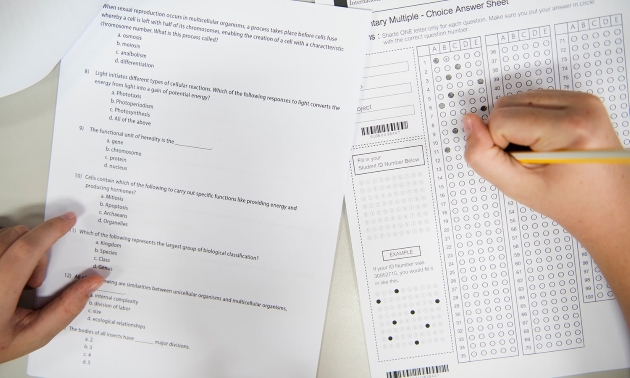Discover How to Help Your Child Prepare for the NAPLAN Test
High-quality student evaluation is just as important as high-quality instruction. The Australian curriculum and educational system are renowned for their excellence. Approximately one million Australian students take the NAPLAN assessment each year, making it one of the most important student performance tests.
Despite its significance, NAPLAN can be intimidating to prepare for and frequently appears complicated to parents and students. Whether you’re a parent seeking advice on how to help their children study for the test and improve their performance, here’s what you need to know.
What Is NAPLAN?

Every year, about a million Australian schoolchildren in Years 3, 5, 7, and 9 take the National Assessment Programme for Literacy and Numeracy, or NAPLAN. This program’s ultimate objective is to assist the Australian government in determining whether or not pupils are meeting significant reading and numeracy objectives. Additionally, it enables teachers to monitor their students’ development and modify their lesson plans as necessary.
How about the students? What impact would a higher or lower NAPLAN score have on them? NAPLAN is not an indicator of a child’s intelligence or academic capacity, like any standardised assessment. Nonetheless, it can be highly beneficial:
- It can assist a student in evaluating critical life skills, such as applying for jobs, filling out paperwork, and doing math.
- Teachers can support children who aren’t performing as well as the typical student for their age group.
- Teachers can recognise and support children who perform better than their peers.
Parents are possibly the most concerned group about the test. That makes sense given that they only want the best for their kids, including their intellectual growth. Thus, they frequently worry about the outcomes and how they will affect their loved ones.
How Do You Prepare for the NAPLAN?
We understand that parents of children taking the NAPLAN want to see their children succeed. The best way to accomplish that is to prepare your child by familiarising them with the test and the various skills it assesses and practising with the help of comprehensive NAPLAN books. These tips will help you prepare for the test as effectively as possible.
Practice with NAPLAN Test Books

Using NAPLAN workbooks is one of the most effective ways to prepare for the assessment. These specifically designed resources cover all of the disciplines that are being tested, including reading, writing, language conventions, and numeracy.
You may ask if they’re really necessary as past tests are publicly available. The answer is yes; although the official NAPLAN papers from 2008–2011 and 2012–2015 are accessible for download, they lack solutions. A child can benefit from these papers if they complete them with the assistance of a parent, teacher, or tutor to identify their areas of weakness. Engaging NAPLAN books provide explanations and guidance, making them valuable for independent study or parent-led preparation.
Because the phrasing of NAPLAN questions can be significantly different from what students encounter in regular schoolwork, practice books familiarise students with this style, reducing confusion and easing their anxiety. Additionally, these resources allow students to identify and address knowledge gaps by taking corrective action. For example, a Year 5 student struggling with fractions can focus on targeted exercises to build competence.
While not officially endorsed by the NAPLAN program, NAPLAN exercise books are widely regarded as effective tools for exam preparation. They can also be used for general revision or as a tutoring aid, independent of the test.
Encourage Your Child to Get Familiar with the Online Platform

Depending on their school, your child will either take the exam in the traditional paper format or the new online way. The NAP has now made the internet platform available to the general public through a demonstration site.
Drag and drop, interactive features, and tabs are just a few of the features that can assist your child in organising their time and tasks, so you can help them visit the website and become acquainted with it. They may then begin answering the questions promptly because they won’t have to waste ten minutes figuring out where to click and how to use the online platform. Given the timed nature of the exam, that is crucial.
Help Them Identify Their Learning Style
Visual, auditory, logical, physical, social, and solitary are the seven types of learning. You can create techniques to help your child comprehend the questions and improve their fact recall if you have previously identified their preferred learning style. If you get creative, you might encourage your child to get creative, too. For instance, it might be helpful to have your child underline the terms in the question if they learn best with visual aids. Have your youngster learn the nine times tables by playing or memorising them on their fingers if they learn best by touch.
Encourage a Positive Mindset
Test anxiety is a common challenge for students, but fostering a positive attitude can make a significant difference. Encourage children to view challenging questions as opportunities to learn rather than obstacles to overcome. Phrases like “I’ll give it a go” can replace self-defeating thoughts such as “I can’t do this.”
Parents play a crucial role in shaping their child’s outlook. By offering reassurance and celebrating small achievements during preparation, they can help build resilience and confidence. It’s also important to remind students that making mistakes is a natural part of learning and growth.